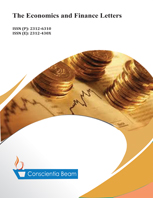Do agricultural prices respond to interest on reserves?
DOI:
https://doi.org/10.18488/29.v10i1.3311Abstract
This paper elucidates the responsiveness of agricultural commodity prices to changes in interest on reserves, an unconventional monetary policy. It uses a vector autoregression model on monthly data for the United States, from October 2008 to July 2019. The empirical findings show that an increase in the interest rate on reserves leads to a drop in the price of corn, sorghum, and cotton. An increase in the interest on reserves declines the money supply, which increases the real interest rate and makes bonds lucrative over alternative investments such as agricultural commodities. This depresses the farm commodity prices, and the effect reaches its maximum after nearly four months. However, the impact on wheat prices is relatively weak. The estimations are robust to alternate specifications. The results of this study confirm the strong linkage between money supply and the prices of agricultural commodities. Food security for those nations that are heavily dependent on imported food grain from the U.S. market are dependent on the U.S. monetary policy.

